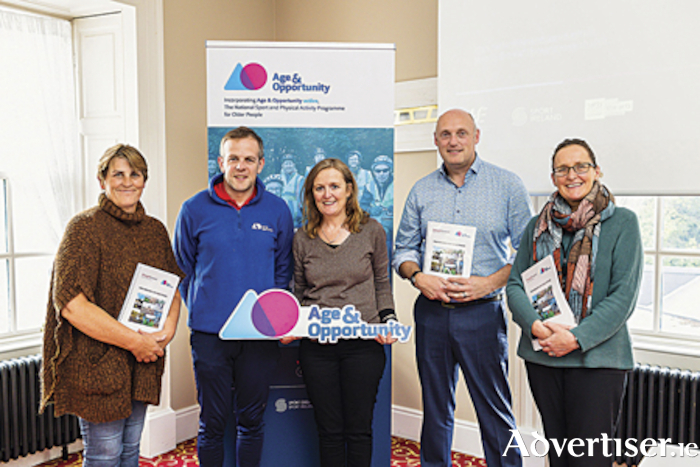New research published by Age & Opportunity shows older people avoid using public spaces for physical activity due to a lack of access to toilet facilities.
Of 200 people interviewed for the research lack of toilets was identified as the main barrier to enjoying the outdoors.
The research report entitled ‘Peer Research on Public Spaces’ investigated the barriers and motivators of older people using public spaces for physical activity. It was launched by staff, volunteers and peer researchers of Age & Opportunity along with representatives from Sport Ireland, Westmeath County Council and Arthritis Ireland as part of European Week of Sport.
The research also found that only 54% of older rural dwellers have access to public space within a ten minute walk. This is in contrast to 87% of older people in urban areas.
The research was conducted using a novel approach in which 14 older people from the Age & Opportunity network worked as citizen researchers. Following training, they each interviewed up to 20 peers.
Age & Opportunity also collaborated with Seamus Mullen of Straight Forward Research in the production of this report. Other key findings of the research include:
The main reasons older people access public space are health motivated. Secondary reasons include enjoying scenery and wildlife, spending time in nature, getting out of the house and feeling revitalised.
More people (51% ) who use outdoor space meet the HSE’s physical activity guidelines for their relevant age group than those (34% ) who do not make use of outdoor space.
The largest proportion of respondents (over 25% ) indicated that the lack of toilet provision was the main barrier preventing them from accessing open space for outdoor recreation. This is consistent with discussion with the peer researchers. It also is an issue which featured prominently in the case studies identified by the researchers.
80% of respondents indicated that they are happy to use the open space which is nearest to them for the purposes of outdoor recreation.
Almost all respondents (96% ) indicated that they are able to travel to and from public spaces on their own or independently, for example, walk there on their own or drive themselves. However, analysis shows that the ability to travel independently decreases as age profile increases.
The report recommends that future projects, funding and policy decisions in relation to older people and public spaces take into account the need for on-site physical infrastructure including toilets, handrails and fresh water taps; group-based activities and social connection; safety considerations; transport connectivity; and programme support. All of these create an enabling rather than a disabling environment for everyone – not just older people.
Opportunities and supports are needed to encourage older people’s groups to return to physical activity including the provision of enabling environments both indoors and outdoors and the resources and transport infrastructure to avail of them.

